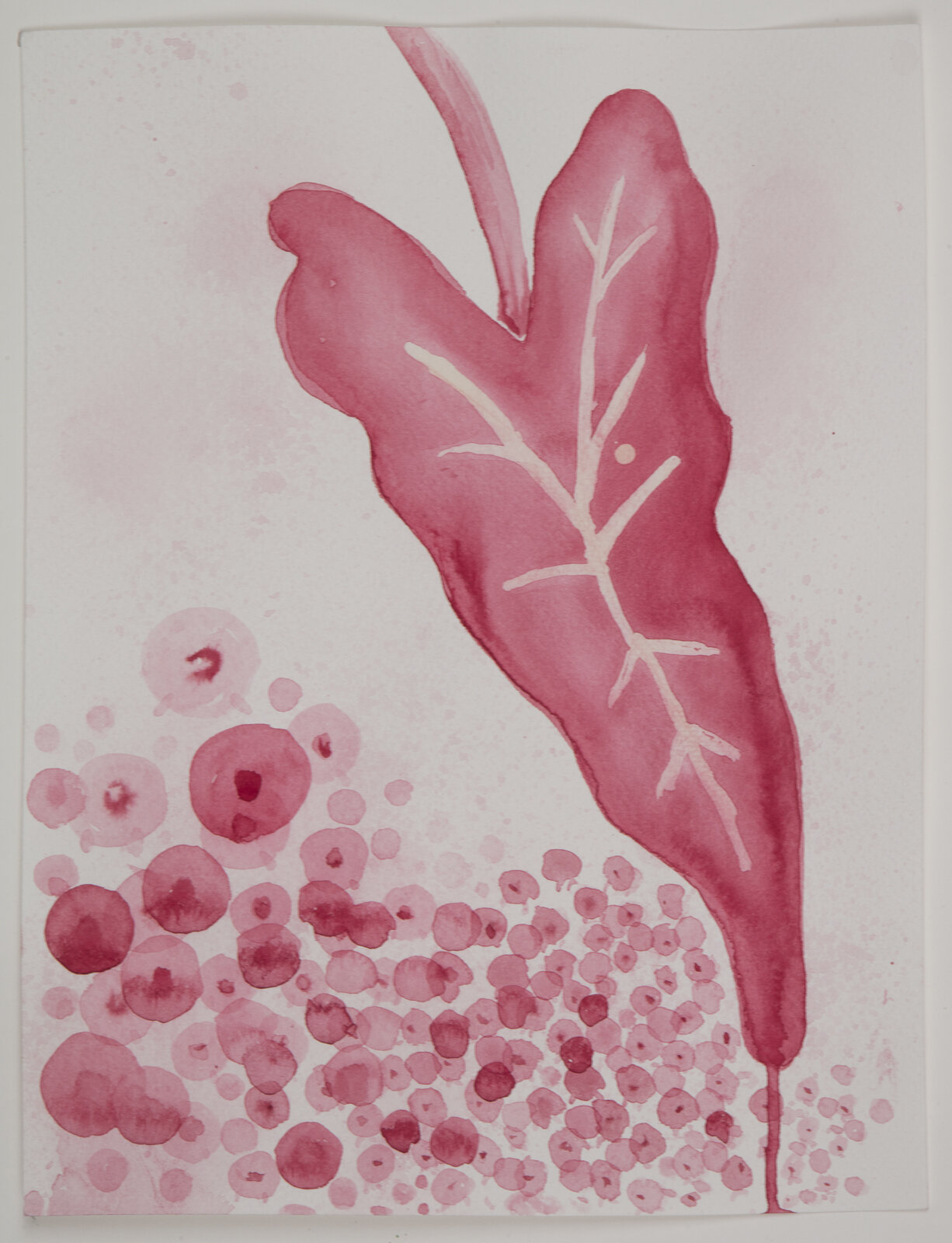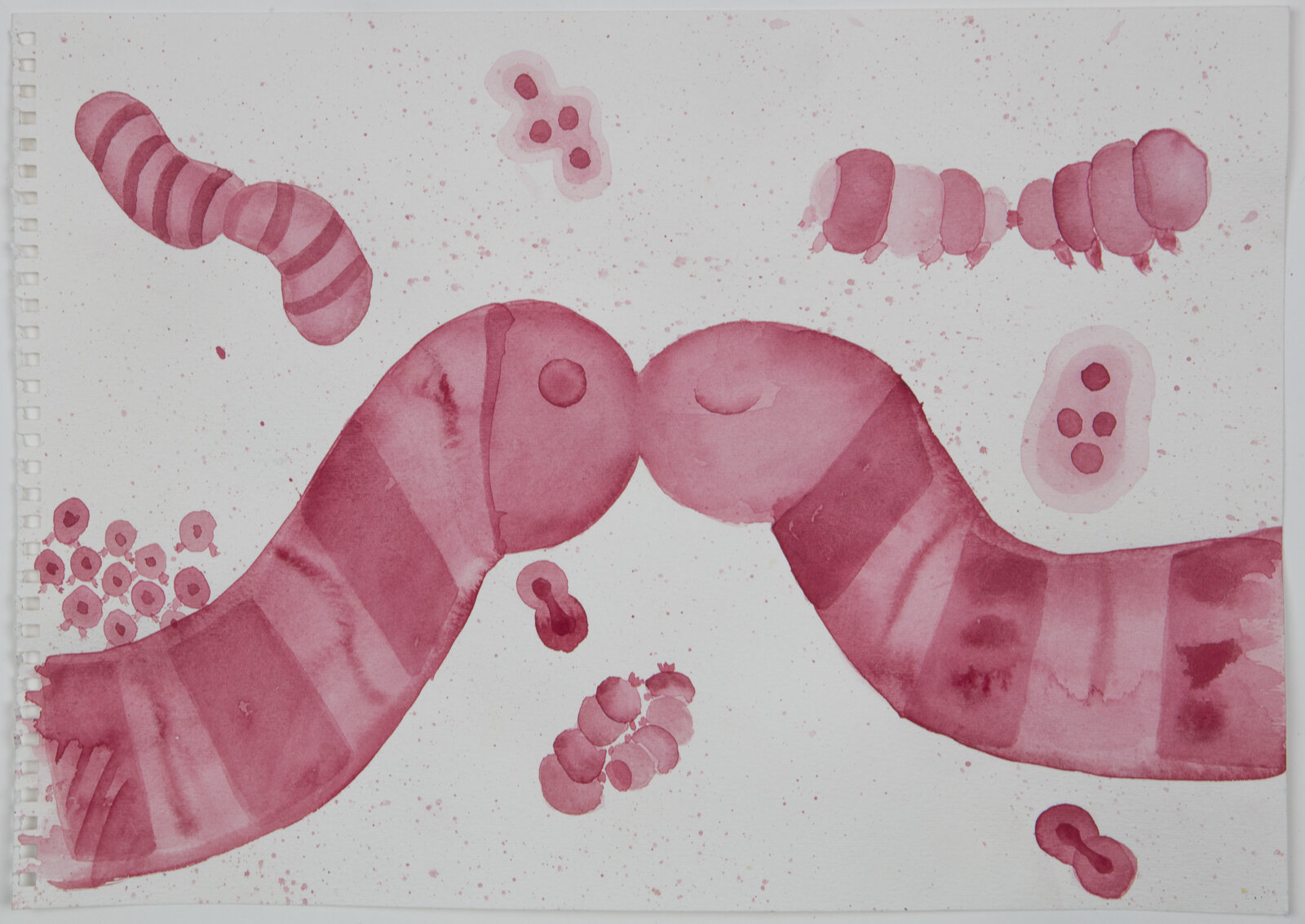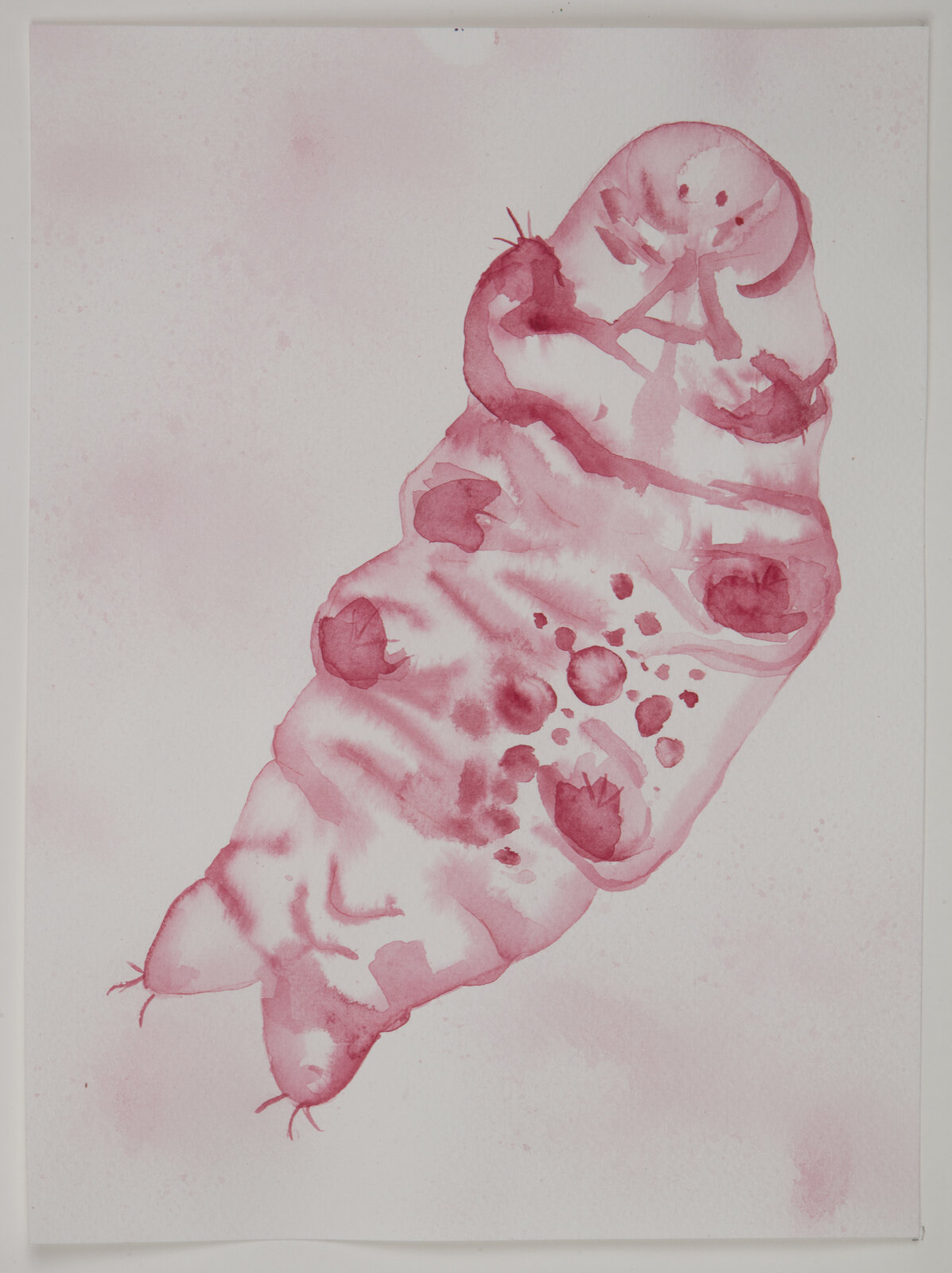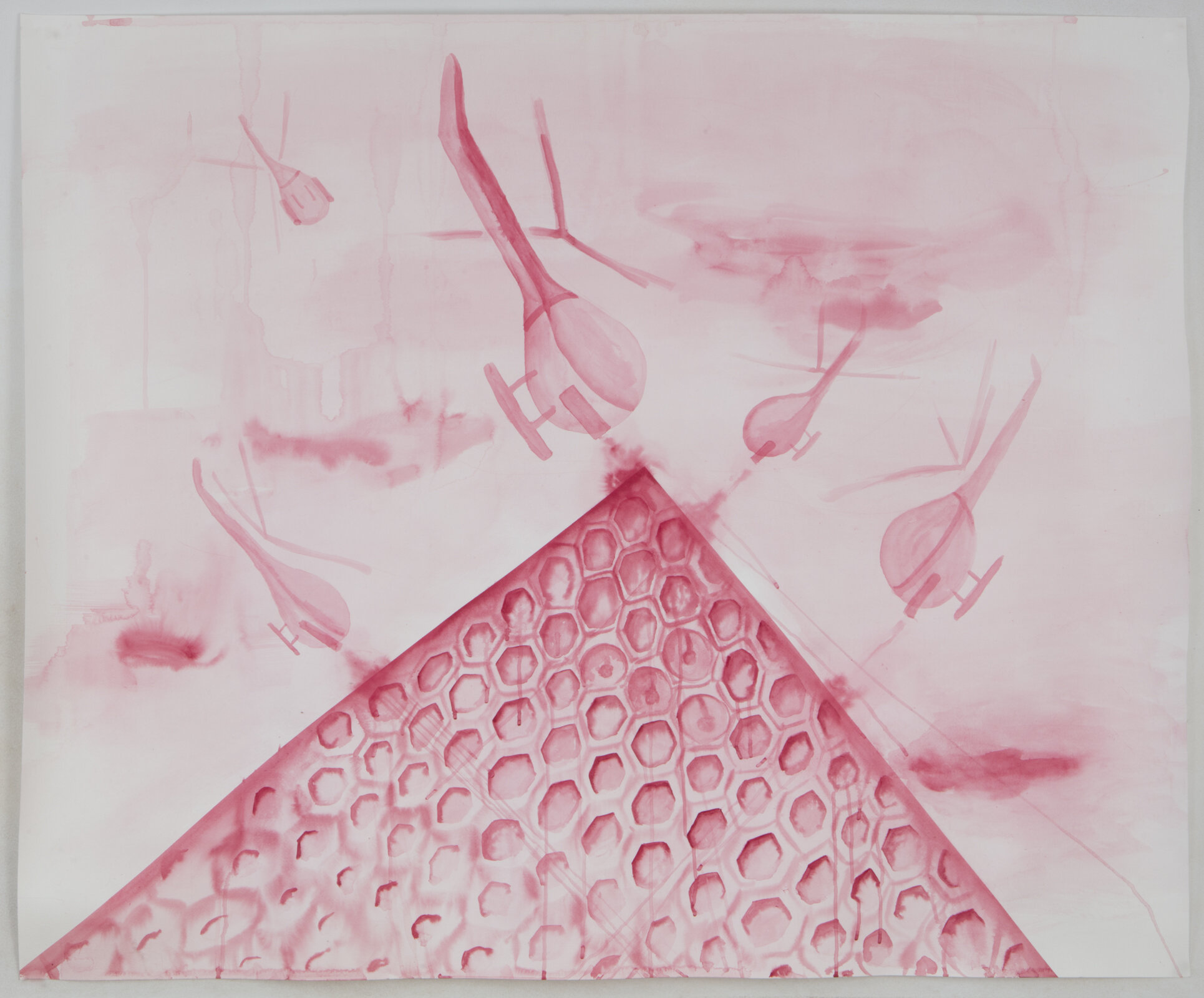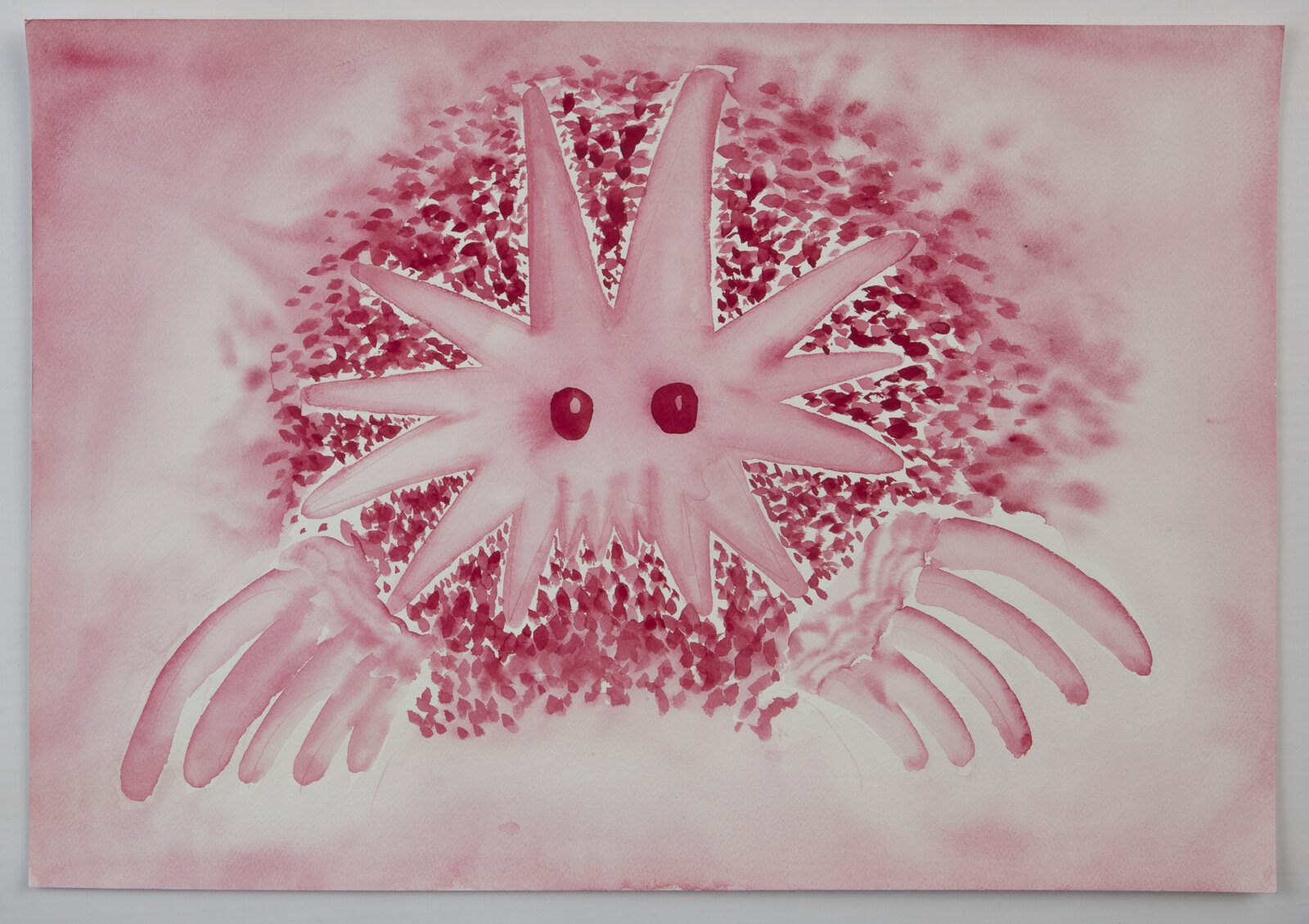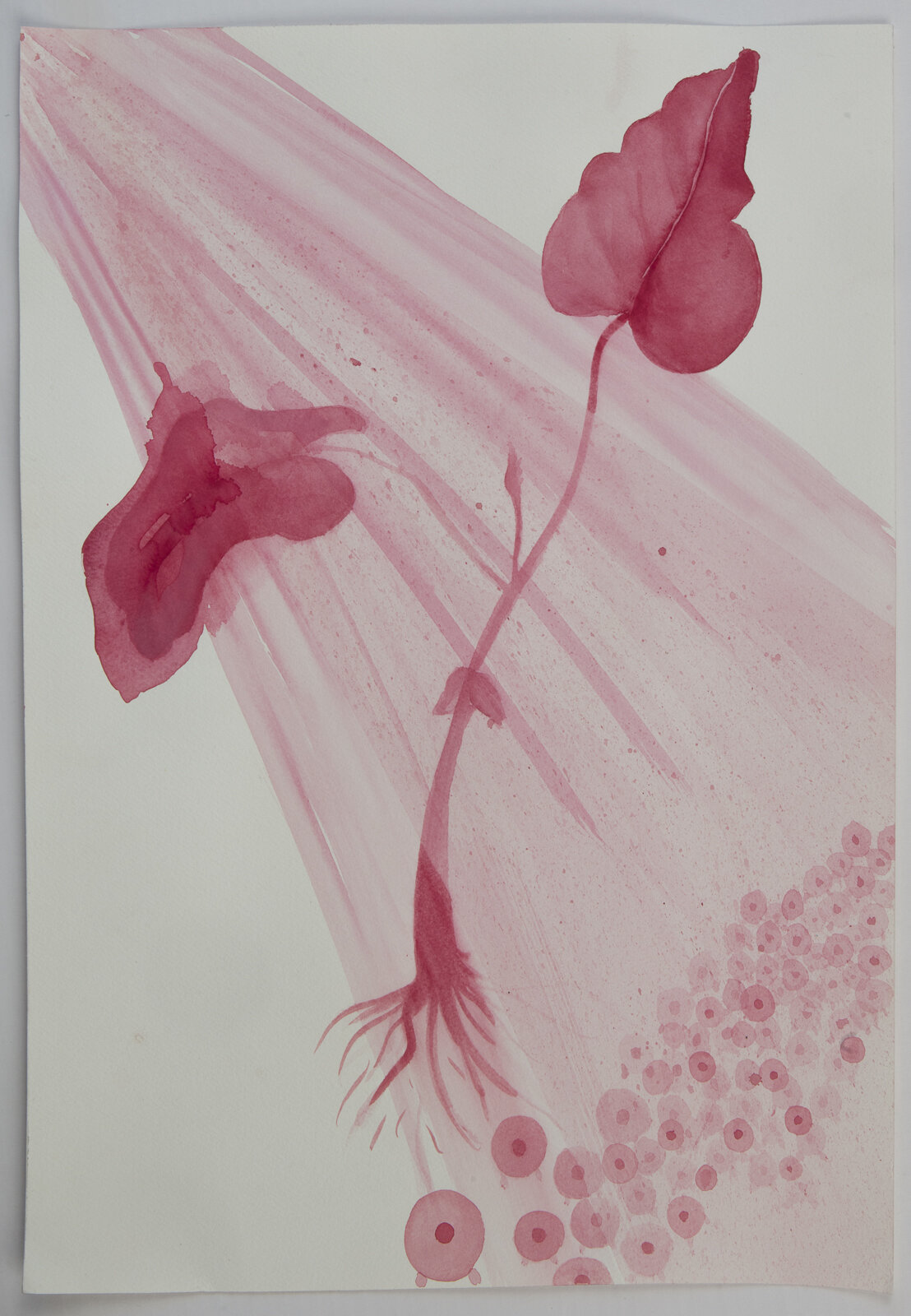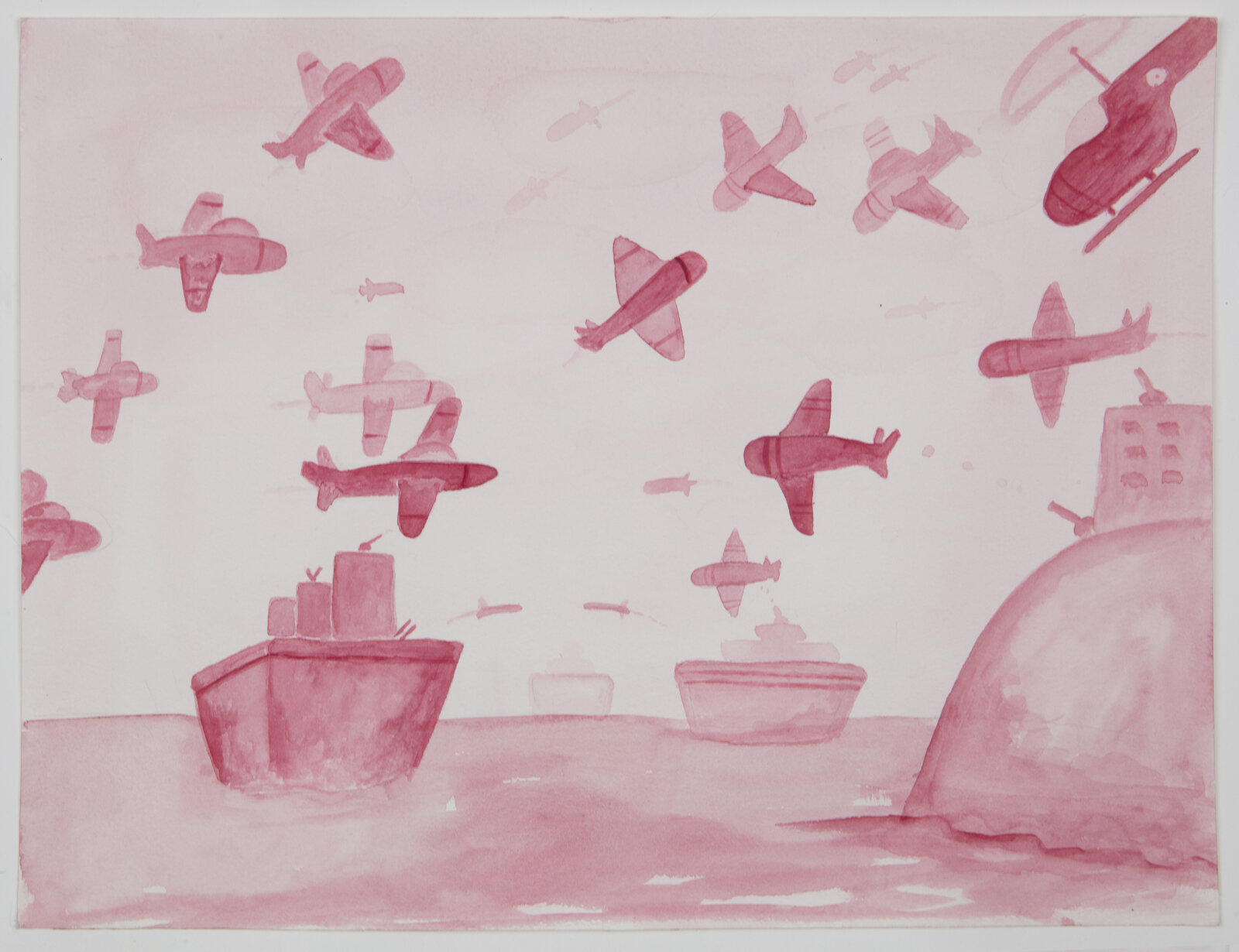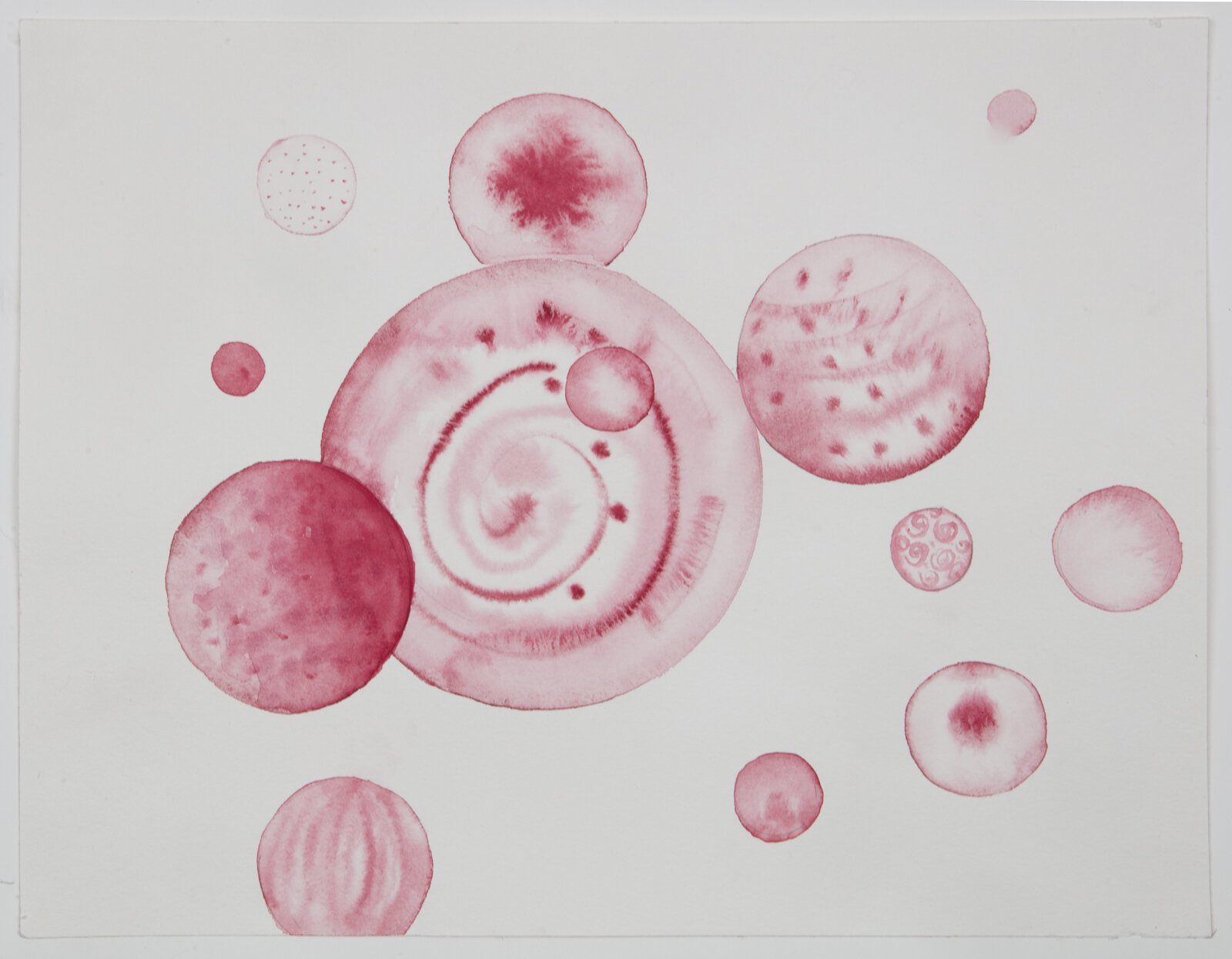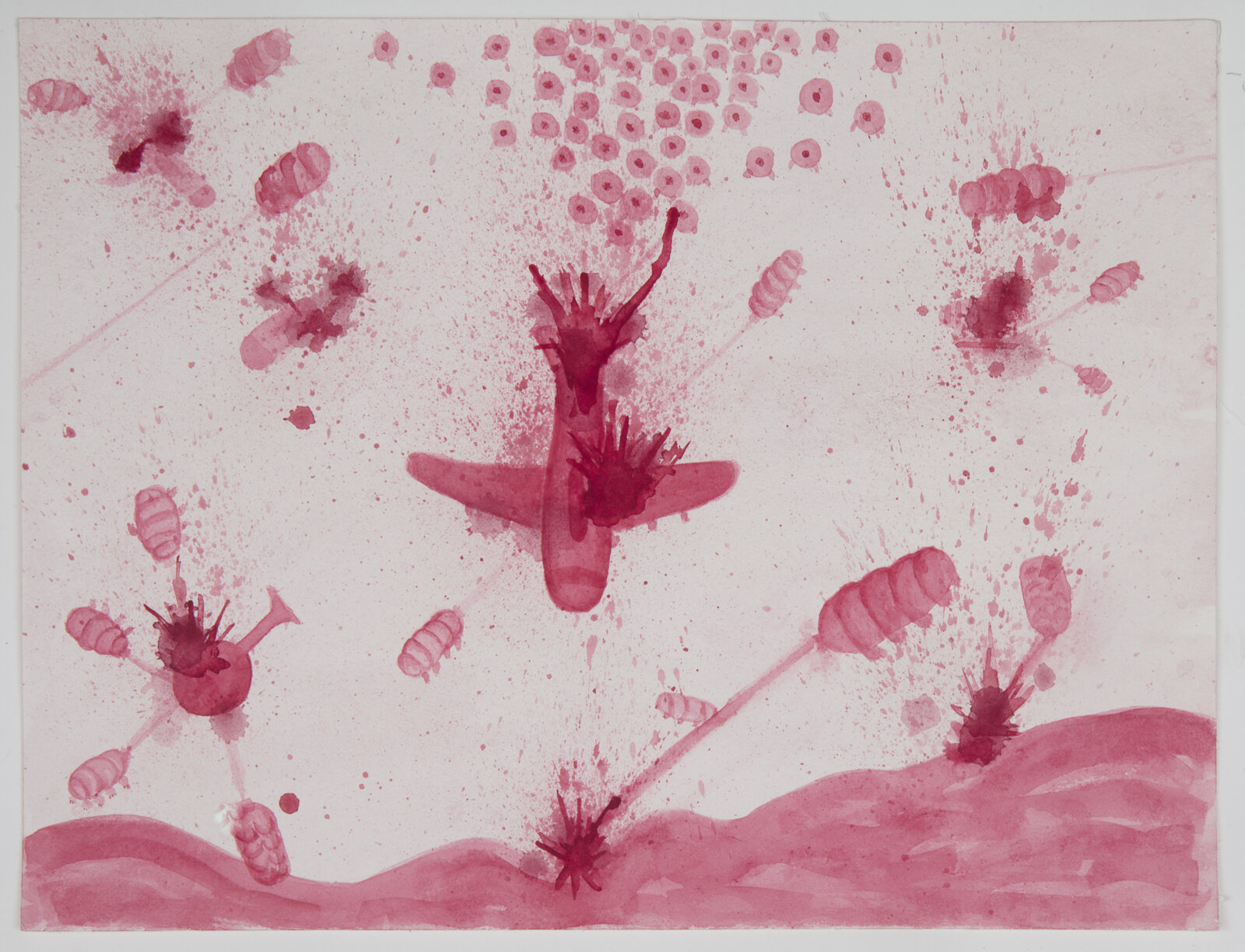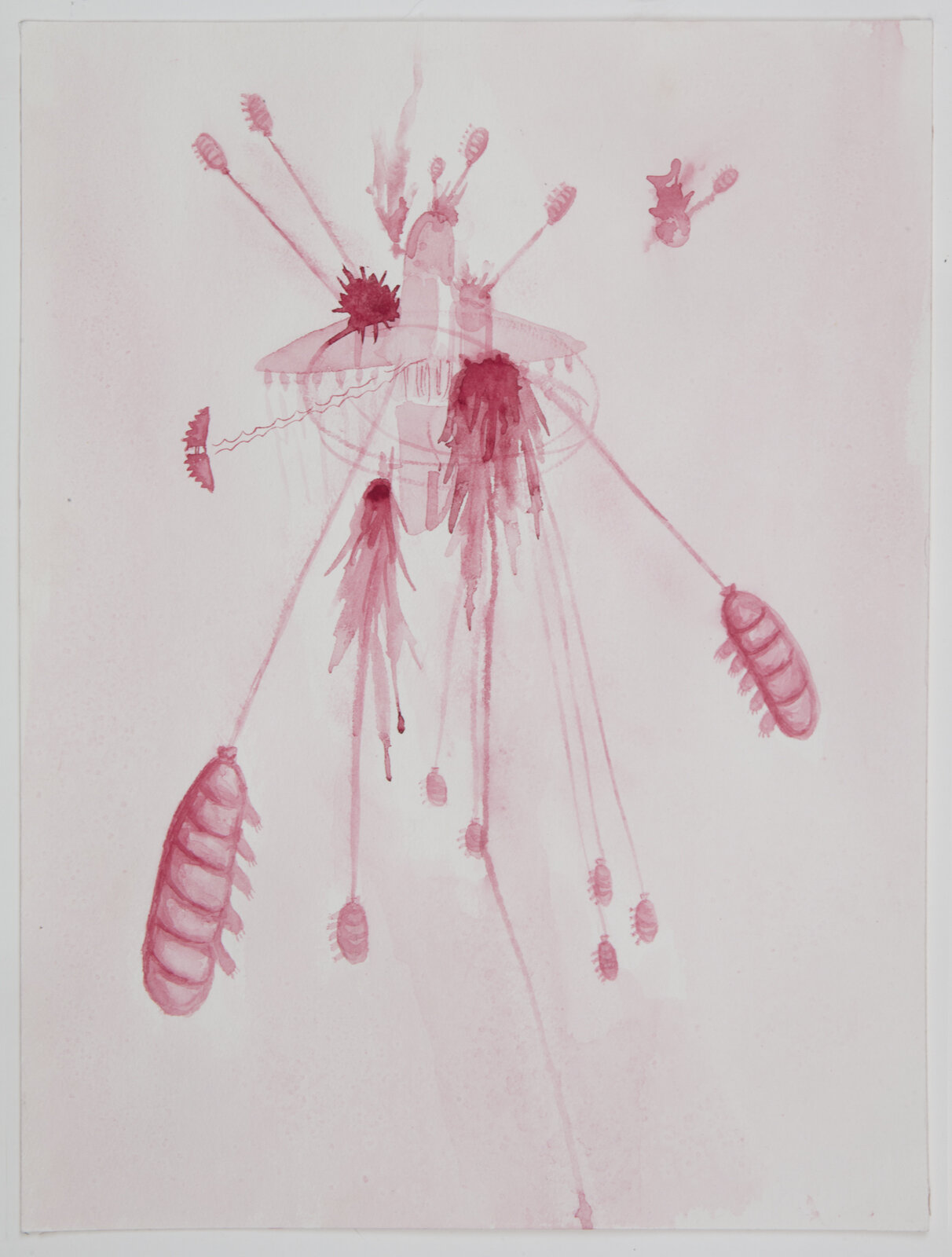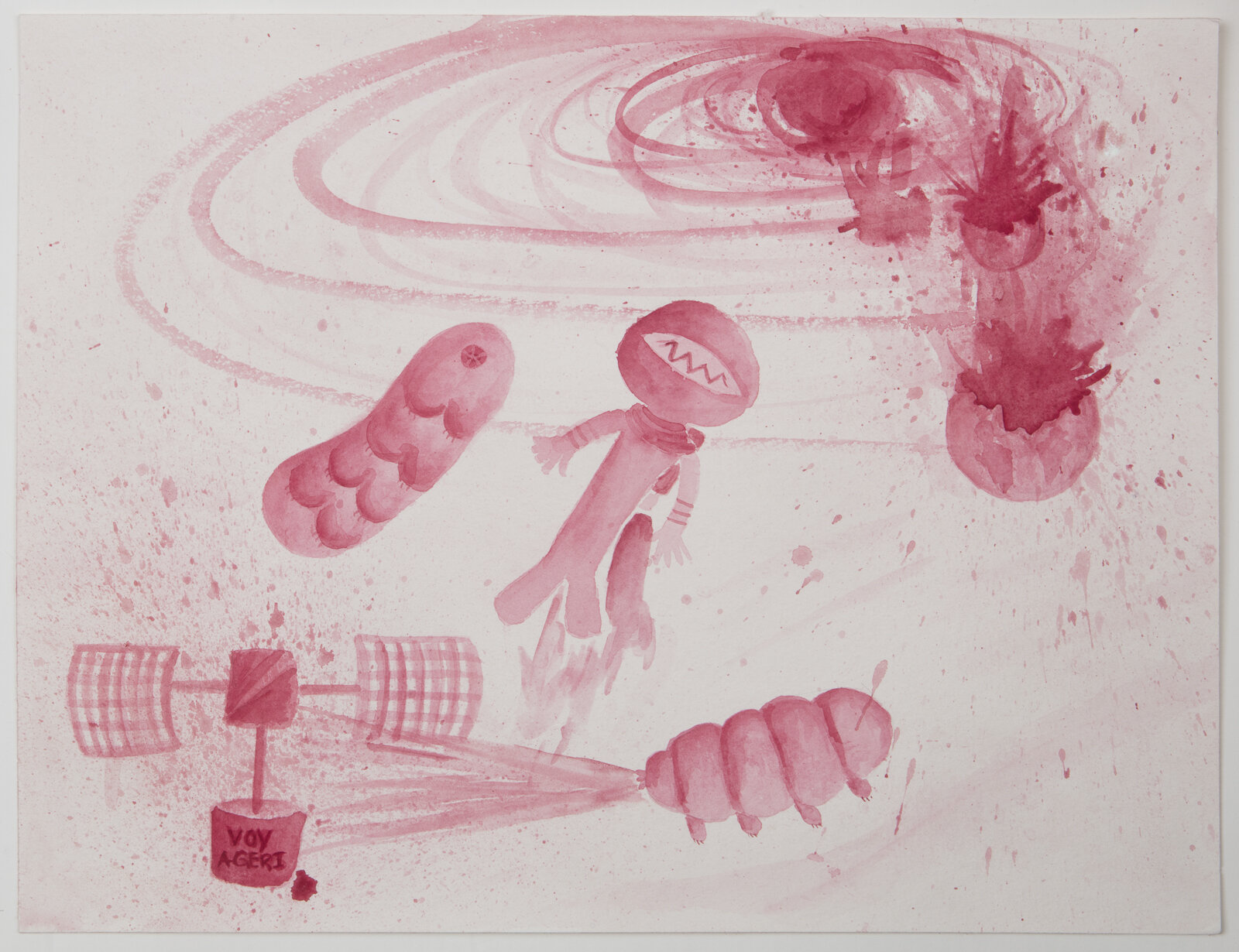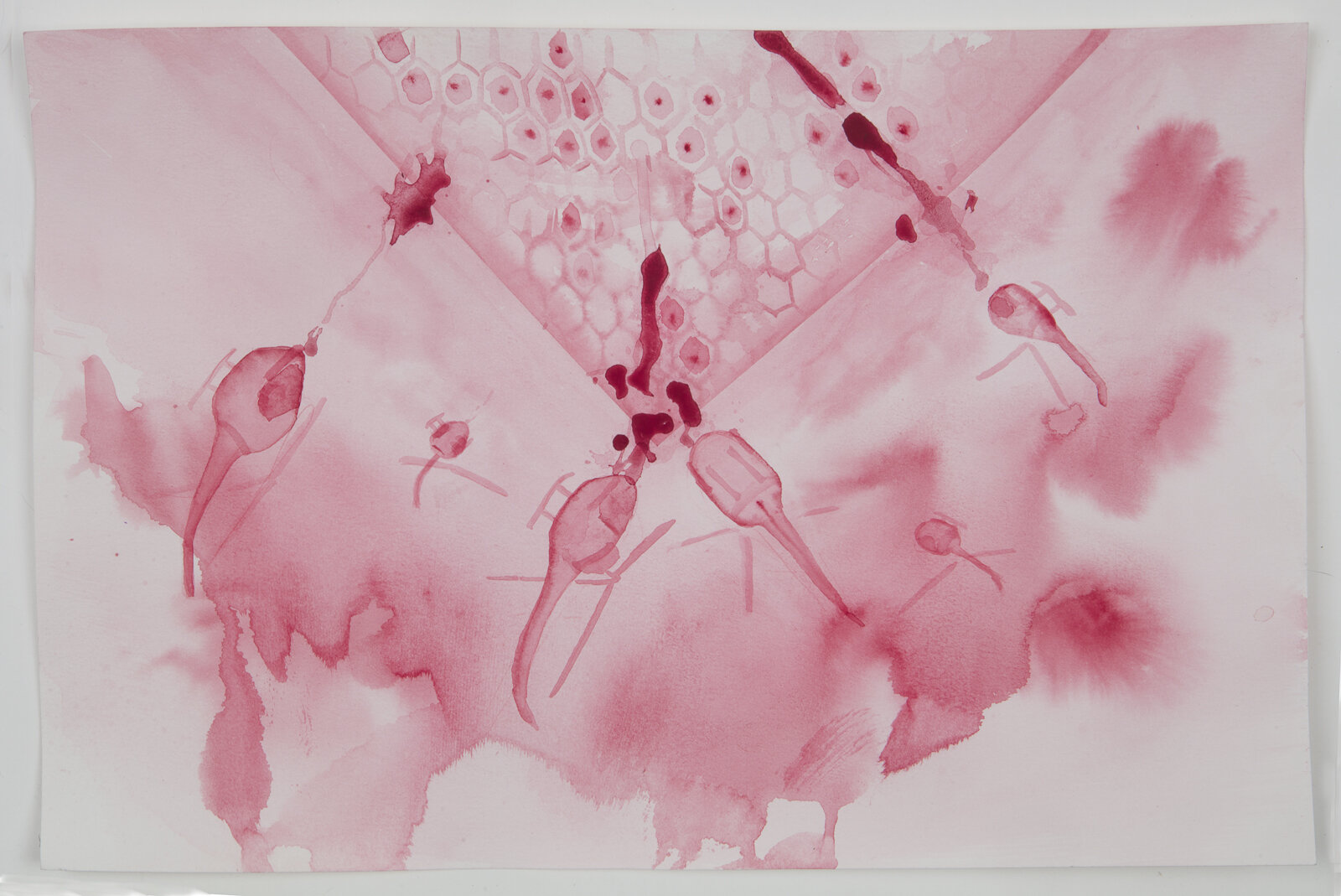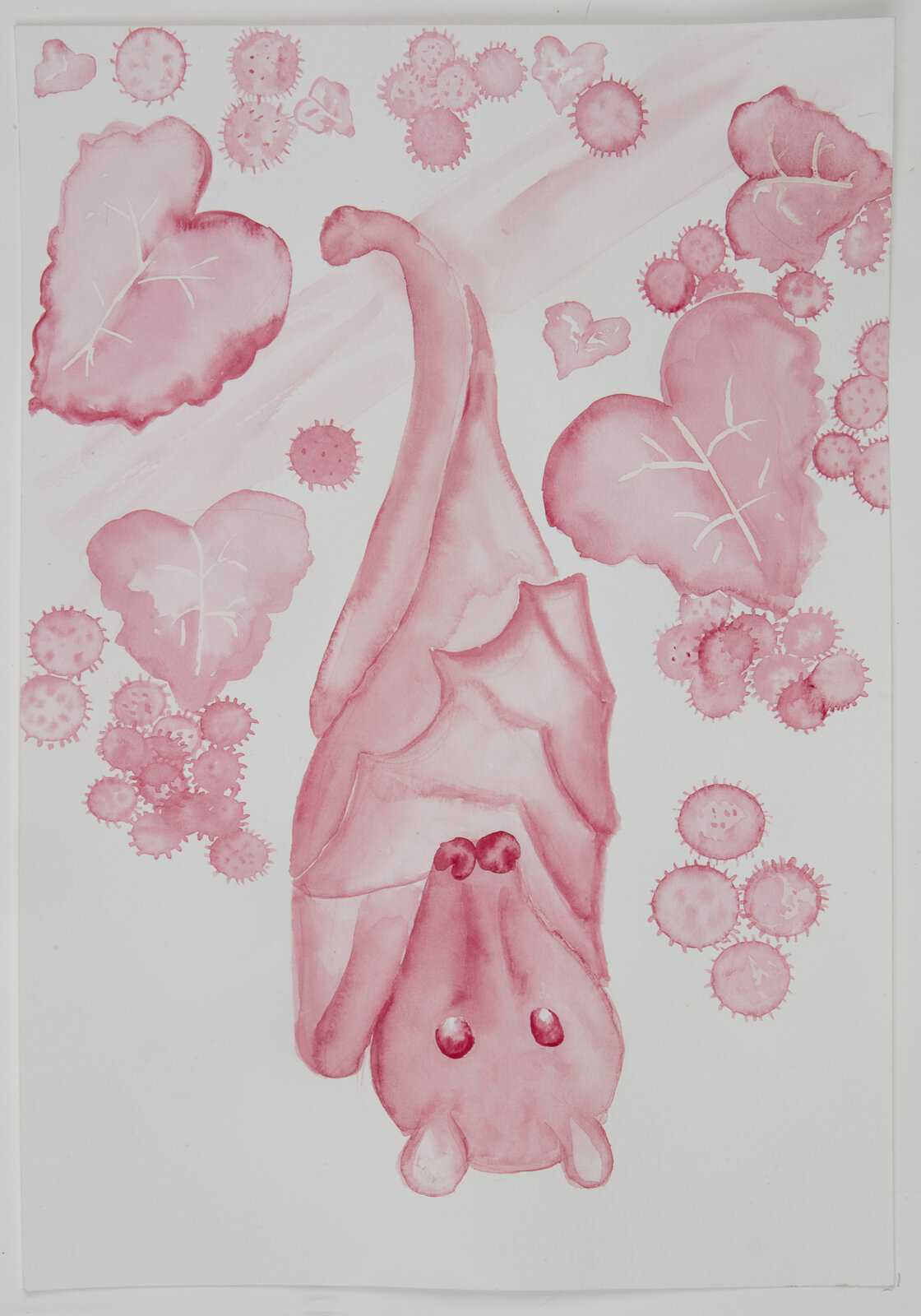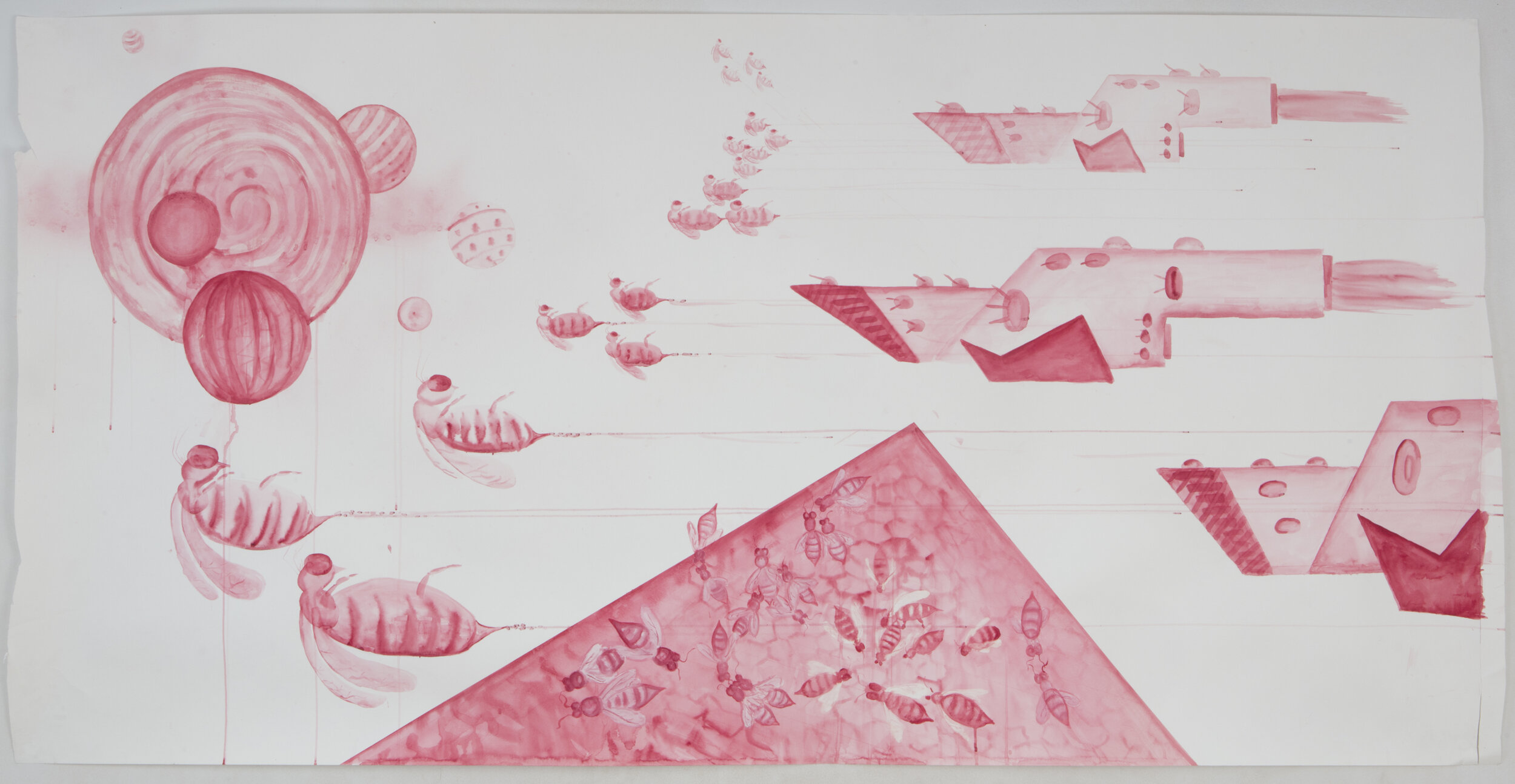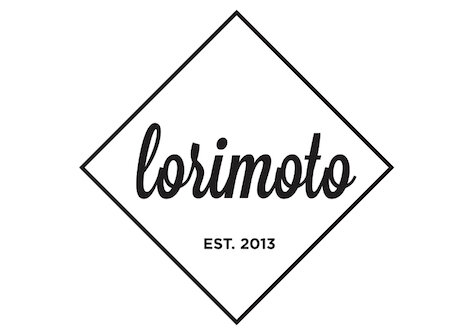TARDIGRADES WARS AND THEIR ALLIES
An exhibition by Cibele Vieira
December 5th , 2020 ~ January 17th , 2021
Opening Reception : December 5th 2~5pm
Social distancing and mandatory mask wearing enforced
Lorimoto Gallery
1623 Hancock Street
Ridgewood, Queens, NY 11385
Lorimoto gallery is please to present the exhibition Tardigrade Wars and Their Allies by Cibele Vieira, a series of 35 monochromatic watercolors on paper made with cochineal pigment the artist started in 2018. Most of the works included in the exhibition were painted during this year’s pandemic while she lived in relative social isolation. The exhibition is made possible with the Grant for Individual Artists from the Queens Council on The Arts and it is curated by the art historian Gaudêncio Fidelis. The works range from 9x12 inches to 4x10 feet. Over the past two decades Cibele Vieira has developed a conceptual approach that bridges de realms of figuration and abstraction at times blurring the boundaries of both while considering a variety of media from photography, to sculpture to painting. Born in Porto Alegre, Brazil, Vieira lives and works in New York since 2004. She has a Master of Arts in Media Studies from the New School University and a Certificate in Photography from the International Center of Photography both in New York. Her work has been included in several group and solo exhibitions in the US and elsewhere.
The virtual gallery was made in collaboration with the artist Lenara Verle.
THE WORLD ACCORDING TO TARDIGRADES
Gaudêncio Fidelis
Curator. Ph.D. in Art History
Tardigrades are the most resilient creatures that inhabit the earth. They have been shown to survive temperatures as low as -272°C and as high as 151°C, crushing pressure, and over a thousand times the dose of gamma rays that humans can. Experiments have proven their ability to live in the vacuum of outer space for weeks. Their survival in such harsh conditions is credited to their capacity to enter a state of metabolic suspension called cryptobiosis, from which they can revive up to 40 years when conditions become favorable. Strangely enough, they are considered aquatic animals as they need a film of water surrounding their bodies to allow locomotion and gas exchange. However, they may be found on mosses, liverworts and colonies of lichen where some humidity is present. Also know as “Water Bears” or “Space Bears”, tardigrades belong to an ancient lineage of species that dates back to the Early Cambrian period over 500 million years ago. If the world as we know ends by a cataclysm event, tardigrades will most likely be the only ones to survive.
Artist Cibele Vieira began this series of works in 2018, far before the world was stricken by the pandemic of COVID-19. This catastrophic turn of events has already claimed more than a million lives and disrupted life more dramatically and on a larger scale than humanity had seen in a century, and will most certainly forever alter the way we engage with the world. As we put these images into perspective, a feeling of premonition is inevitable—these works largely anticipated the world we now inhabit.
One of the most pernicious effects of the pandemic is that authoritarian regimes around the globe have weaponized the virus’s effects, discrediting reliable information in order to further their own agendas. For those believing in democratic values a dire battle against authoritarianism has developed. “Tardigrades Wars and Their Allies” offers a metaphorical world of possibilities that shows the significance of establishing alliances in battle while aiming to win a war for the greater good in a democratic society, on a planet worth preserving.
In the world of fragile democracy and limited freedom, building resistance has become the most relevant human activity never before considered. Here, it’s up to some of the tiniest creatures visible to fight for the existence of something as elusive as free will, in a world were the existence of choice itself is greatly debatable. Tardigrades are largely invincible, as they exist within the realm of immortality. Mutual dependence is captured in these works with striking clarity as the interaction between these rather diverse animals resonates with and reflects the history of warfare and military strategies permeating human life in every respect. Any paradigm constructed around human behavior must take into account the interdependent global ecosystem, since humans rely on the environment for survival, a fact largely ignored by many civilizations, including ours.
One of the greatest lessons of the Art of War (c. 5th century BC), by Sun-tzu—a classic treatise on military tactics—is that “all warfare is based on deception.” Strategy aims to make the enemy believe that “attack, strength, and location”, should appear as the opposite of their intention or function. History shows that that the trajectory of war chronicles the human incapacity to live in peace. It is always a tale of tragedy, great loss of material culture, and the destruction of the environment in which we inhabit and depend on.
In Vieira’s world, unlikely images collide with disconcerting fluidity, from the Golden Gate Bridge in San Francisco to the Corcovado (Christ the Redeemer) in Rio de Janeiro to a volcano, the most unlikely animals seem to coexist in striking harmony. Chicken, bats, octopuses, banana slugs, star–nose moles, endangered species such as pangolins and even the tuiuiú, a native bird and distinguished inhabitant of the Amazonian region, all seem engaged in one purpose. If we look at these battle scenes as indicators of the value of rebellion to subvert the order of things, we may conclude that in this risk-filled universe apparently in extinction, the goal is to fight for a greater good and to guarantee the quality of life and harmony on behalf of all species, from which humans appear to be only onlookers.
In The Back of the Chickensaurs (2020), Vieira depicts some of these creatures looking through a window frame into the landscape. An octopus, a star-nosed mole, a bee, a tardigrade, and a bat gaze at the horizon contemplating a world in suspense. The structure of the scene conflates two disparate worlds, rarely able to coexist: that of low and high, the former referencing popular culture such as the movie Star Wars, to which the image clearly resembles, and the latter of canonical art history, relating to the prototypical compositional nature of design in Eva Hesse’s Hang Up (1966). The origins of Hesse’s evocative image in which a long metal rod projects from the frame into the space of the viewer coincides now with the distinctive shape of the octopus and its tentacles as they stretch from the upper right corner of the frame to the left, while one of its arms rests on the body of a tardigrade. The implication that these animals have replaced the space of humans suggests that we may have lost our place in nature, or that the world may indeed be better off without us.
Like many of the animals in these works, octopuses are soft-bodied invertebrates, which allow them to alter shape and to squeeze into small gaps. They have a great sense of touch directly connected to taste as they are able to sense both by means of contact. Curiously, they do not form a mental image of what they touch, therefore, unlike humans, they are not bounded by the curse of gestalt. Lack of kinesthetic sense prevents them from perceiving movement as a whole. Their sense of sight, however, is excellent and they are highly intelligent creatures. It is no wonder they are fighting a war that looks much like a theater acted through unconventional modes of low operation and highly advanced tactics.
In another work titled Noah’s Arc (2020), the artist depicts a cityscape, which rests on a concave platform that is both an allusion to interconnected bridges floating in space as if in constant instability. This futuristic scene suspended in the air signals to the absence of context where figure-ground becomes hard to grasp, suggesting a disfigurement of our most basic relationships with the principles of reality. As we still can see the existence of the sky by the indication of lightning that strikes the buildings below, there’s no stable ground to relate to. Could it be that this work points to the prototypical cityscapes of Giorgio de Chirico's (1988-1978) metaphysical scenes, now transformed into a dystopian world permeated by isolation? Here, what was once the dense mass of water becomes the ethereal vacuum of air where the city floats and humans, again, are nowhere to be seen.
Vieira’s work frequently depicts bees in battle scenes such as in The Hive Attack (2020). In this work, a beehive in the shape of a pyramid is attacked by futuristic helicopters. Coincidently the flight patters of bees have a similar mechanism of those of flying machines whose vortices help provide lifting and stability. The triangular shape of the pyramid resonates with the structure of the geometric shapes of the beehive, perhaps one of the most sophisticated and complex structures that exists in the animal kingdom. Its constructive features invoke elements of modern architecture that humans can only strive to imitate. The nature of bees maybe instrumental to our understanding of society as an alternative form of interaction, where renouncing violence and building common ground is possible. Bees have appeared in the work of a number of artists, most notably Joseph Beuys (1921-1986). The artist was inspired by the ideas of Rudolf Steiner (1861-1925) for their deep connection to a utopian society driven by communal work of living organisms that are greatly dependable. Bees are deeply connected with the creation of energy and transformation as they produce honey from pollination through a complex process of digestion that in Vieira’s work may be associated with the tradition of cultural cannibalism or anthropophagy. Honey, with its fluid and golden color, has provided artists throughout generations with the means to evoke the alchemical nature of substances, enabling them to expand the properties of metaphor.
The iconography of these works including fruits such as grapes that seem to have overtaken the urban space, the foliage of beans and roots of trees growing beyond human scale points to a sophisticated web of elements that activates consciousness by engaging it with a sense of alienation. The disguised naiveté and innocence of these images is only a feature hidden behind its flirtation with the tradition of Surrealism. On the other hand, these watercolors are made with a red colorant derived of carminic acid produced from dried and pulverized bodies of female cochineal insects. It’s one of the oldest organic pigments and was used by the Aztec and Maya people beginning in the second century BC. The application of this reddish color in these works not only enhances the mood of the bloody battles depicted but also takes them to the tradition of the monochrome, a highly canonical intervention in the realm of art history.
Tardigrades display empathy towards their allies suggesting the construction of moral ground, a message delivered here with hints of socialist ideals. Tinged with providential and unconventional disregard for principals of canonical ethics, these battle images seem to imply some moral thrust from a neutral framework that shreds and undermines the structure of capitalism. It's a message delivered with plausible and intelligible emphasis and yet it leaves room for a greater expansion of possibilities providing an extensive inventory for interpretation.
Cibele Vieira (Brazil, 1973) has been exhibited internationally in gallery and museum contexts, including at Petzel Gallery, Front Room Gallery, and Christopher Henry Gallery, among others in New York City, at Bienal de Fotografia de São Paulo, and Ateliê 397 Gallery in São Paulo, Brazil, and is in the collections of the Museu de Arte do Rio Grande do Sul in Porto Alegre, Brazil and the Kiyosato Museum in Japan. Her work was included in the controversial Brazilian exhibition Queermuseu that was closed down by the Brazilian alt right in 2017. She has been featured in The Village Voice, Brooklyn Rail, Hyperallergic, and L Magazine, among other publications. She has a Master of Arts in Media Studies from the New School University and a Certificate in Photography from the International Center of Photography both in New York. She lives and works in New York City.
Gaudêncio Fidelis (Brazil, 1965) is a curator and art historian specialized in modern and contemporary art from the Americas, He holds an M.A. from New York University (NYU) and a Ph.D. in Art History from the State University of New York (SUNY-Binghamton). He has organized and curate more than fifty exhibitions and since 2019 has been a Fellow of the of International Institute (IIE)- Scholar Rescue Fund, and a Fellow of the New University School in Exile Consortium (UIE) as a Researcher Scholar at Parsons School of Design in New York.
Lenara Verle is an artist and researcher in the field media art, collaboration and alternative currencies. She has a Master of Arts in Media Studies
at the New School University New York and is currently a PhD art student at the Frankfurt University. UNESCO-ASCHBERG resident artist at the
Planetary Collegium in Plymouth, UK (Summer 2000) and resident artist at the ZKM Center for New Media Art (2005-2006), Lenara participates
since 1994 in the award-winning group Sito Electronic Arts and her work Gridcosm 1000-000 is winner of the VAD Net Art First Prize (Girona,
Spain 2003) and the ZKM Media Art Award (Karlsruhe, Germany 2005). She's a lecturer for the Digital Communication and the Game Design
programs at Unisinos University in Brazil. Her latest projects and artworks can be found at www.lenara.com and at www.coinspiration.org.
Lorimoto Gallery has been operating since 2013 and is run by the artists Lori Kirkbride and Nao Matsumoto. The gallery has organized over 30 shows since its inauguration and has an extensive history of showing local artists and engaging with the community.

